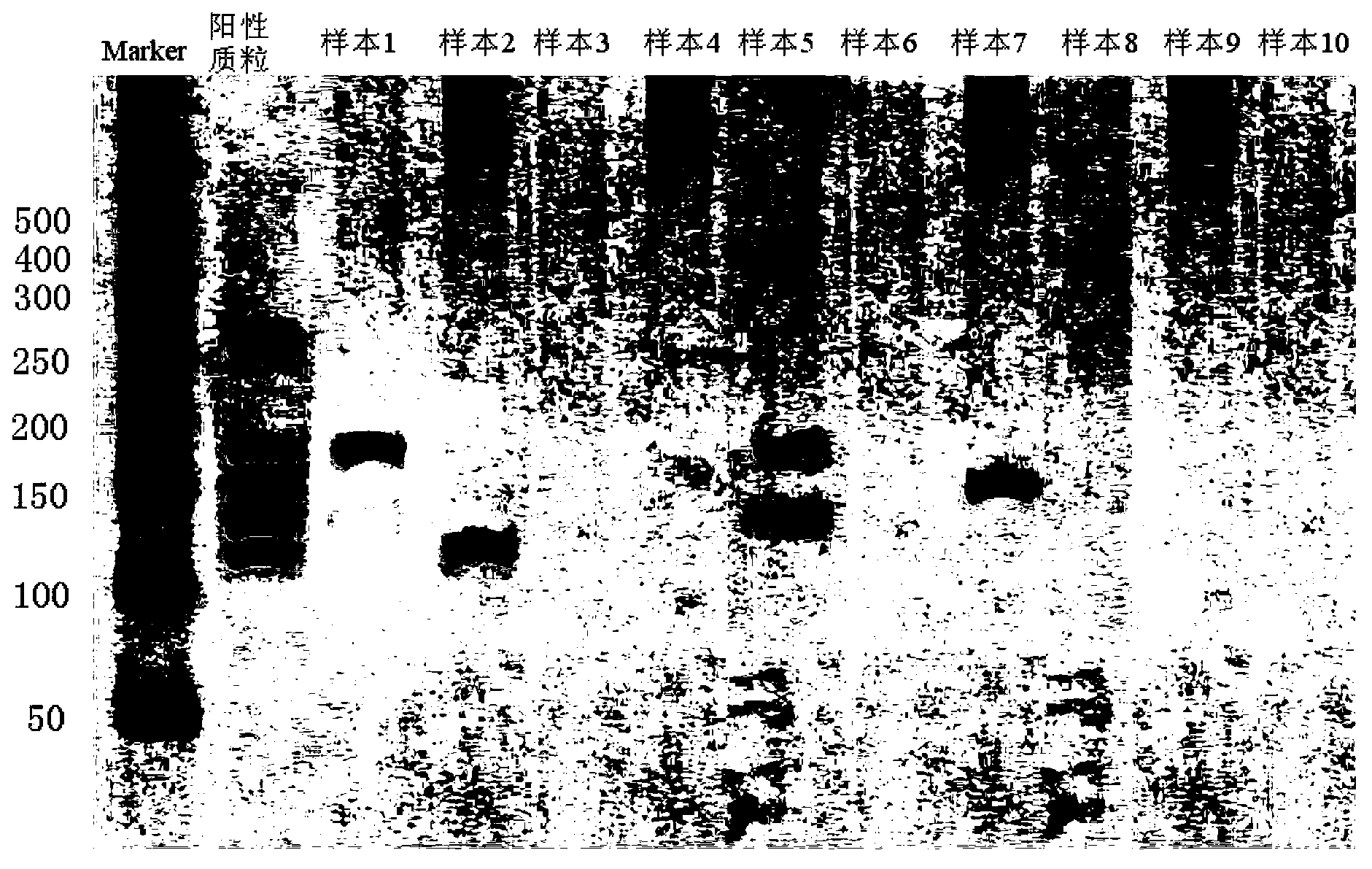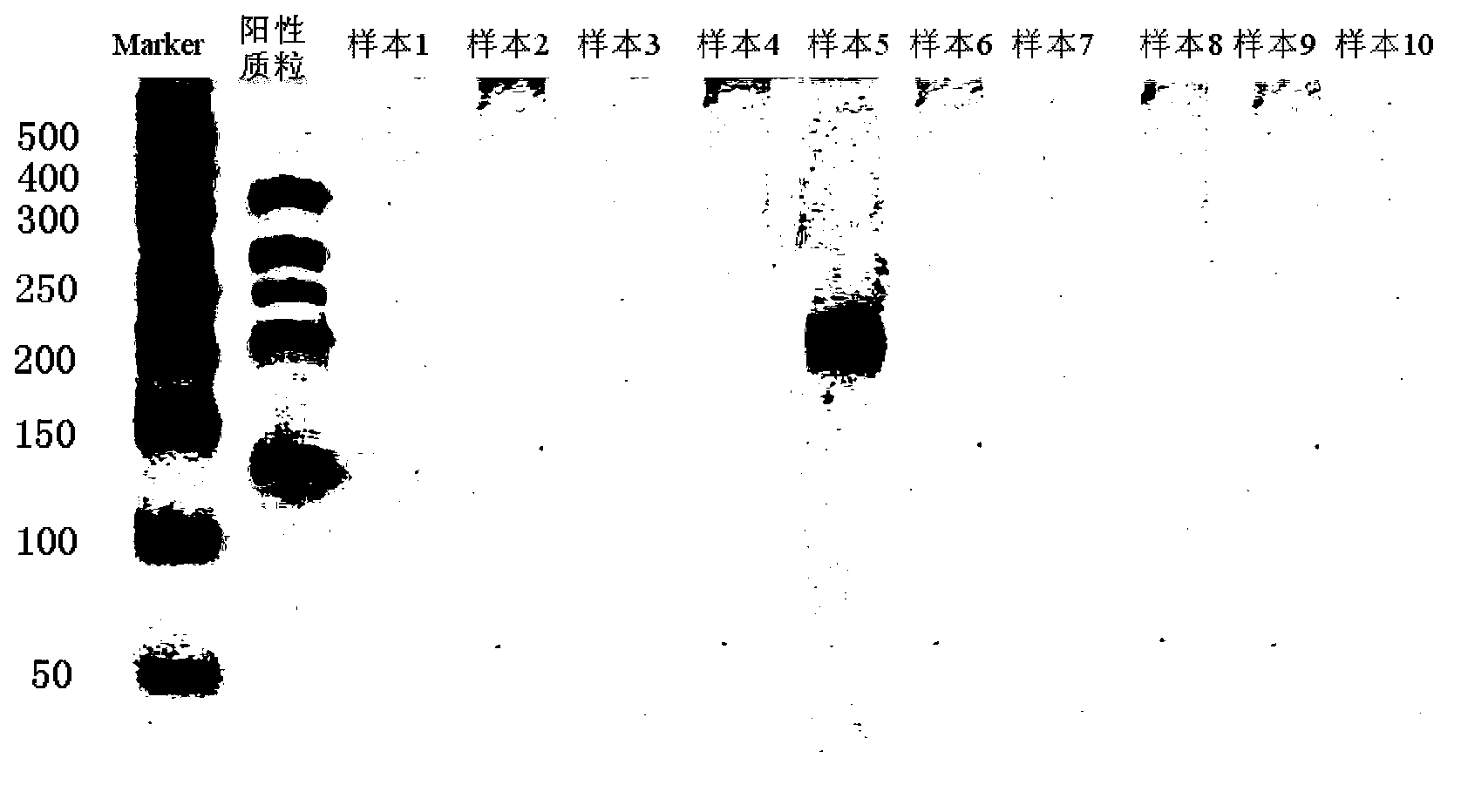PCR (Polymerase Chain Reaction) primers, kit and liquid-phase chip for detecting ROS1 fused gene
A fusion gene and liquid phase chip technology, which is applied in the field of molecular biology, can solve the problems of inaccurate identification of fusion types, various types of reagents, and cumbersome test procedures, so as to improve detection accuracy, increase fluorescence signal value, and overcome sensitivity. less sexual effect
- Summary
- Abstract
- Description
- Claims
- Application Information
AI Technical Summary
Problems solved by technology
Method used
Image
Examples
Embodiment 1
[0040] Example 1 A kind of PCR primer and positive control substance for detection of ROS1 fusion gene detection
[0041] 1. RT-PCR amplification
[0042] 1. Reverse transcription
[0043] For the ROS1 fusion gene subtypes detected by various targets, the present invention first uses random primers to perform reverse transcription on the target detection samples, and reverse-transcribes the mRNA in the samples into cDNA. The specific experimental steps refer to the "Molecular Cloning Experiment Guide", using random primers Reverse transcription of mRNA is a routine procedure.
[0044] 2. PCR amplification
[0045] The fusion types in Table 1 are the 11 ROS1 fusion gene subtypes detected by the target of the present invention. According to the nucleic acid composition characteristics of the fusion gene sequence, the forward primer and reverse primer were designed using Primer5.0. Using the cDNA obtained in step 1 as a template, 11 target detection fusion gene subtypes were a...
Embodiment 2
[0055] Example 2 uses the PCR primers in Example 1 to detect the ROS1 fusion gene
[0056] 1. PCR amplification
[0057] Using the PCR amplification primers described in Table 1 in Example 1, PCR amplification was carried out to the mRNA reverse transcription product of the target detection sample and the positive control plasmid mixture, and at the same time, in order to facilitate the use of conventional electrophoresis techniques to distinguish PCR amplification bands , according to the size of the PCR product (as shown in Table 1), the 11 fusion types detected by the target and their corresponding positive control plasmids were divided into 2 groups, and 2 independent PCR amplifications were carried out at the same time, and agarose gel was used to Gel and polyacrylamide gel for detection, according to the size of the amplified product, PCR primers are divided into required categories, and detected by electrophoresis technology, which is a conventional method in the art. ...
Embodiment 3
[0068] Example 3 A liquid chip for detecting ROS1 fusion gene
[0069] 1. ASPE Primers
[0070] R32, C6; R34, C5; R34; S2; R32, S4; R32, S4; R34 of SDC4-ROS1; SL13; R32, SL4; R34 of SLC34A2-ROS1 ; E10 of EZR-ROS1; R34; L16 of LRIG3-ROS1; R35 and T5 of TPM3-ROS1; R35, a total of 11 specific primer sequences designed for fusion subtypes. ASPE primers consist of "Tag + specific primer sequence". ASPE primer sequences are shown in the table below:
[0071] Table 3 ASPE primer sequence ((Tag + specific primer sequence))
[0072]
[0073] Each ASPE primer consists of two parts, the 5' end is a specific tag sequence for the anti-tag sequence on the corresponding microsphere, and the 3' end is a mutant or wild-type specific primer sequence (as shown in Table 3 above). All ASPE primers were synthesized by Invitrogen. Each synthesized primer was prepared into a stock solution of 100 pmol / mL with 10 mmol / L Tris Buffer.
[0074] 2. Microspheres coated with anti-tag sequences
[...
PUM
 Login to View More
Login to View More Abstract
Description
Claims
Application Information
 Login to View More
Login to View More - R&D
- Intellectual Property
- Life Sciences
- Materials
- Tech Scout
- Unparalleled Data Quality
- Higher Quality Content
- 60% Fewer Hallucinations
Browse by: Latest US Patents, China's latest patents, Technical Efficacy Thesaurus, Application Domain, Technology Topic, Popular Technical Reports.
© 2025 PatSnap. All rights reserved.Legal|Privacy policy|Modern Slavery Act Transparency Statement|Sitemap|About US| Contact US: help@patsnap.com



